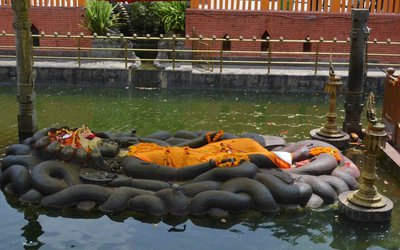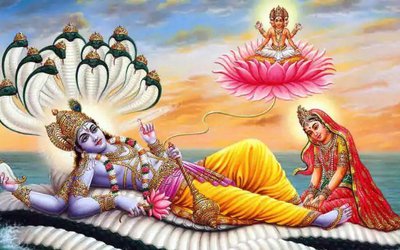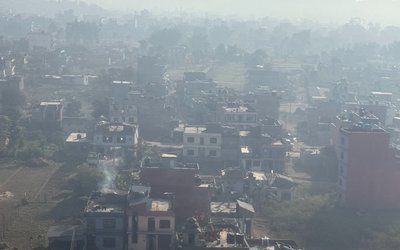
As the number of COVID-19 cases surged in the valley, it will affect the mode of traditional festival Gai Jatra. This year local communities have announced strong restrictions. A traditional festival for Newars, it prevails all over Newar’s settlement in Nepal. However, it celebrated widely in the three cities of Kathmandu Valley. The festival of cow is celebrated in the Kathmandu Valley to commemorate the death of loved ones. As part of the festival, family members of the deceased of the past year send people mostly children. dressed as cows to parade on the streets. The festival usually falls in July or August.
Gai Jatra is a festival of dancing, singing, mirth and laughter. Gai Jatra is a time to remember lost ones and also to ease the pain. The word "Gai" means cow in English. The cow is regarded as the goddess of wealth in the Hindu religion. Sharing of sorrow and taking comfort in knowing that their lost ones are safe is the true reason of celebrating this festival.
The day is also marked with a third gender parade along with many people dressed in weird clothes. In Bhaktapur, the festival lasts for eight days. The origin of this celebration goes back to the reign of the Malla rulers.
It is said that the Malla Queen was in mourning for a long time after the untimely death of her son. The king in an attempt to console her asked every family that lost a loved one to come out in a procession to show the queen that she was not alone with her suffering. That is why there is much joy and joking during the procession that goes through the streets.
Gai Jatra often falls in Nepali Bhadra month (August to September in Solar Calendar) and continues for eight days. Different from any other memorial ceremony in the world, Nepali Gai Jatra is celebrated as a happy carnival.
After losing his young son, King Pratap Malla of Kathmandu has started the festival in the 17th century. After the death of a son, the queen was immersed in the great misery and cried all day long. In order to cheer the queen up, the king held this cow festival.
The folks dressed in the colorful costumes and the decorated cows symbolized the dead this year. The king just wanted the queen to understand that she is not the only one who lost relatives and so many people have also lost their loved ones. Death is a natural phenomenon and no one can change it. The cow procession, drum music, masked dances became the highlights in this carnival. The queen eventually smiled and accepted the loss of her son.
Celebrations of Gai Jatra in Nepal
According to the ancient legend of Hinduism, Yama, the God of Death, would send the black crows to guard the entrance to heaven on this day. Just outside the gate, hundreds of thousands of souls are waiting to accept Yama's judge and their reincarnation is totally determined by the merits they have earned. In mythology, the road to heaven is extremely difficult to follow and the deceased still needs to go across the burning river.
Most Nepalese believe that if their relatives could catch the cowstail, the journey to heaven would become much easier. And the gate of heaven is only open to the dead for only one day in the year. Therefore, every family who has lost loved ones during the last year must participate in this grand cow procession in Kathmandu.
In the past, local Newars give a bath to the cow, especially cleaning their tails. Then the cows are decorated with red Tika and beautiful garlands. After those rituals, the cow processions begin to parade around the whole Kathmandu valley.
If the cow is not available, young boys will dress up as cows to pray for the dead. During the boisterous marches, they will deliberately walk through the temples, the statues of the gods and other sacred places. When the parades pass by, many people will offer the food, gift, and petty cash to the cow owners and the cow-like boys. It's believed that this kind of giving will bring them good luck in the following days.
Of course, the music band is an indispensable part of the festival of cows. And the music instruments vary from Nepalese traditional drum to western trumpet and modern electronics. It's said that the festive music can not only appease the God of Anger but also scare the evils away. With drums beating and cymbals clashing, Gai Jatra reaches its climax.
Source: Various sites
- Three-point Agreement Between Government And Protesting Doctors
- Jul 09, 2025
- 9 Killed and 18 Missing In Rasuwagadhi Flood, PM Oli Inspected Flood Affected Areas
- Jul 09, 2025
- Weather Forecast: Partly To Generally Cloudy Across The Country With Heavy Rain At One Or Two Places In Gandaki, Karnali And Sudurpaschim Provinces
- Jul 09, 2025
- Lhendey River Flood: Dhunche–Timure Road Completely Blocked, Headwork Of Rasuwagadhi Hydropower Washed Out
- Jul 08, 2025
- Rasuwa flood update: 18 People Missing Due to Flood in Bhotekoshi
- Jul 08, 2025















